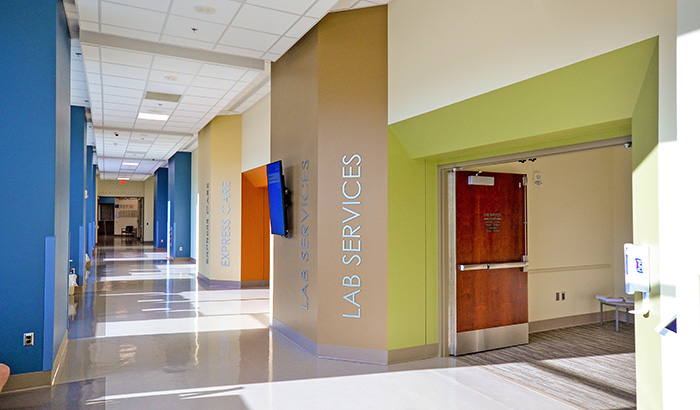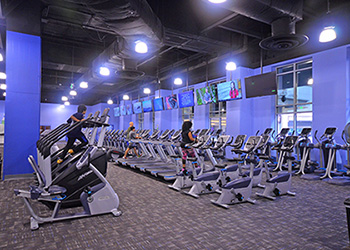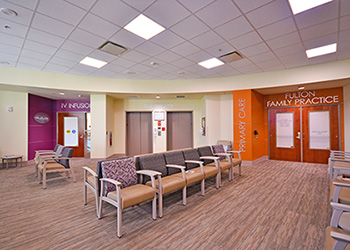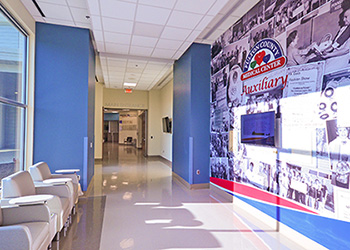The Silver Tsunami in the Age of Consumerization
Find a Balance

Did you know that by the year 2029 it is estimated that people over the age of 65 will represent more than 20 percent of the United States’ population? According to the US Census Bureau, that will be an increase from the 15 percent representation today of people 65 years and older. The “Silver Tsunami” is upon us and is going to keep on coming while lifespans are constantly increasing with advances in medicine and technology. As Healthcare Designers, we need to find a balance in our design practices to facilitate forward thinking design models focused on consumerization and the needs of the senior population. Although it is important to represent all age groups in the design of healthcare facilities, those in the age range of 65 and older are the patients occupying facilities the most. There are plenty of ways to keep up with current design trends that apply to consumerization while satisfying seniors’ needs consecutively such as wellness centers focused on exercise, nutrition and education; interior design techniques that emphasize brighter colors and higher contrast levels; apparent wayfinding and accommodations for shorter travel distances; and spaces that welcome family support.
Wellness Centers
Accessible healthy buildings commonly known as “wellness centers” lead to healthier communities as a whole. These vibrant recreational centers promote physical and mental well-being. Incorporating fitness with an emphasis on cardio and strength training, nutrition advice and healthy lifestyle education is enticing to millennials, seniors and everyone in-between. Many people 65 years and older within the Silver Tsunami are on board with the cardio portion of fitness but there needs to be more attention pertaining to strength training. A recent study conducted by Penn State University says that older adults who strength train at least twice a week have 41 percent lower chances of cardiac death, 19 percent lower changes of dying from cancer and 46 percent lower chances of death for any reason over those who did not.

Interior Design
Color palettes that resonate with both millennials and seniors seems like it would be a daunting task, but it doesn’t have to be because there are many similarities in color perception with both generational gaps. Older surgery patients can experience some form of delirium for weeks after their procedure. Disorientation in surroundings can increase this delirium which could lead to falls and other injuries. Plus, many seniors perceive colors a lot less vividly. A solution to this issue is to use colors that are bold and bright. Colors in the red/orange family seem to work best but if blues and greens are selected, they need to be vibrant. Using colors to create contrast between the floors, walls and ceiling is an even better method to offer patients an increased feeling of grounding. Implementing bold and energetic hues also helps play into consumerization aspects of millennials for desires of creativity and individuality in healthcare settings by taking the “clinical” or impersonal feeling away.
Wayfinding and Travel Distance
Healthcare facilities that incorporate shorter travel distances into patient flow design and implement apparent way-finding capabilities help to aid seniors who may lack energy and mobility. Seating areas that are strategically placed along with handrails and plenty of staff assistance can cater to patients who need to rest. Wayfinding signage needs to emphasize fonts that are large and easy to read. The bold and bright color scheme also plays an important role in wayfinding for seniors and all age groups. Additionally, needs to satisfy consumerization with simplicity and faster rates are executed with shorter travel distances and credible wayfinding.

Family Support
Family support is a huge factor with all patients of any generational gap that are undergoing medical treatment. Individuals that are seniors or very young seem to need the most family support due to the inability to perform basic life skills and make certain decisions on their own. In order to make family members and other external caregivers comfortable, seating areas in patient rooms and private areas for meetings need to be implemented. Family lounges and resource centers with Wi-Fi, exterior views and community art walls provide a space to relax, catch up on work and make phone calls. Environmental control is rated highly by staff and families who help take care of older loved ones because they are better able to provide comfort. Environmental control is facilitated by lighting and temperate control; choice of entertainment whether that be music, medical education or television; and the ability to summon a nurse if needed. Coincidentally, environmental control is one of the top-rated aspects important to millennials as well.

By the year 2046, the beginning of the millennial generation will be 65 years old and their preferences may slightly change but one constant will remain. That constant is Healthcare Designers need to implement adaptation for the future while focusing on the needs of seniors because they will always be the highest patient population.